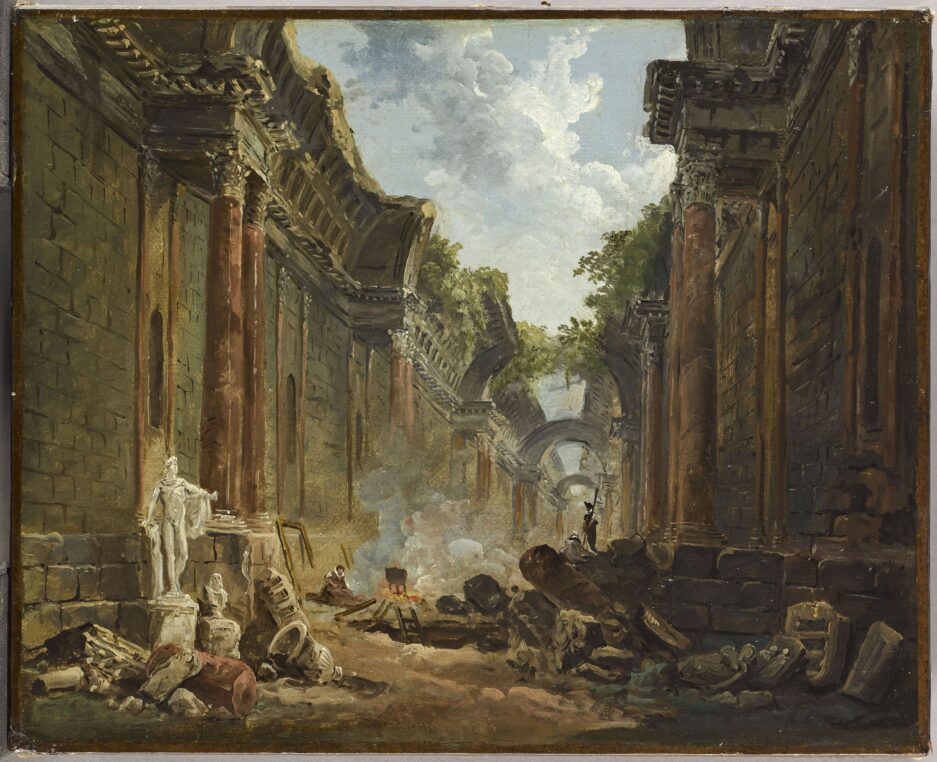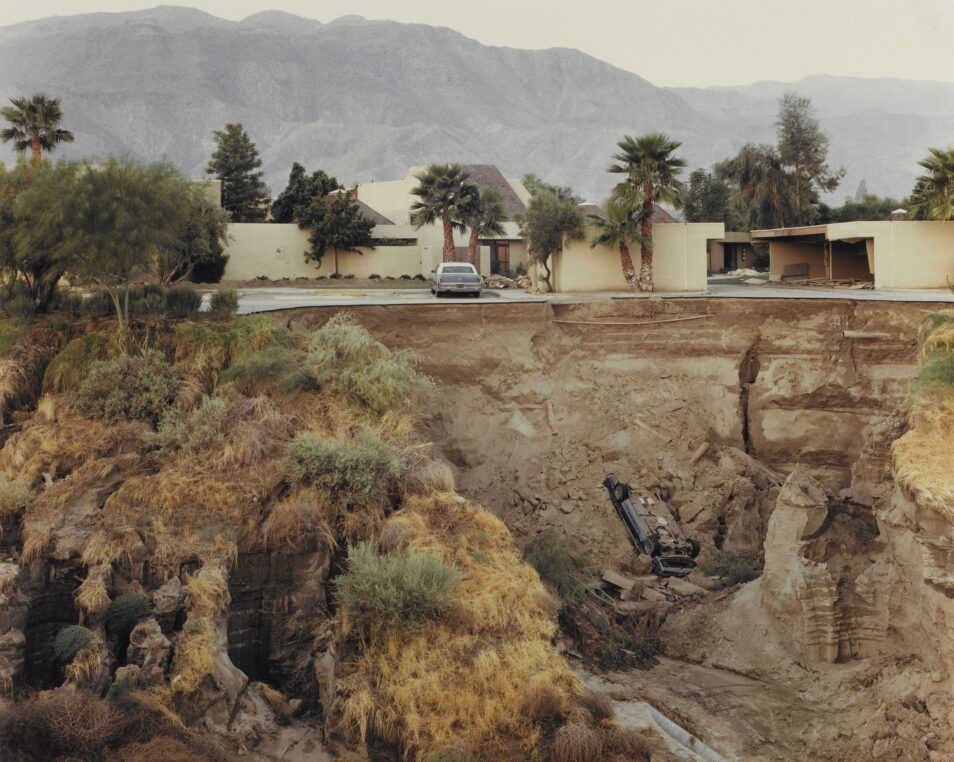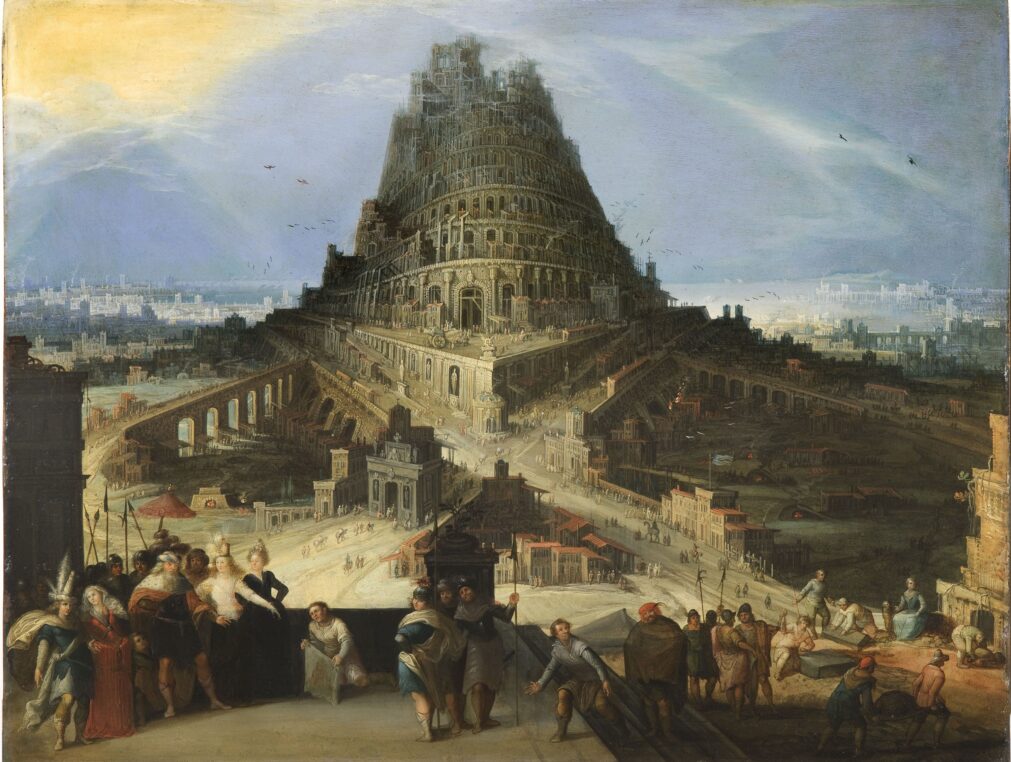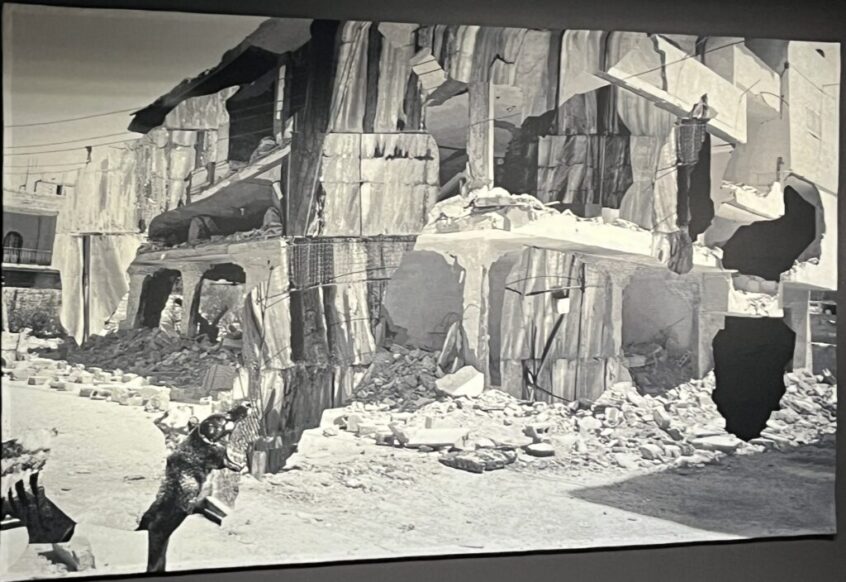
Frédéric Godmer, Palmyre, Syria, 18 October 1921, autochrome from Les Archives de la Planète, conceived by Albert Kahn, Musée Albert Kahn
Enough friends had told me about this exhibition of “Formes de La Ruine” at Musée des Beaux Arts de Lyon, that I booked a return ticket by train (2 hrs) to see it. And I must say I was a bit disappointed. I expected to find incredible, unknown ruins (I knew the Hubert Robert paintings would be fantastic and they are), and I was mostly confronted with contemporary photographs and statues from Polynesia, the Philippines or New Guinea lent by Musée du Quai Branly. A few artists stand out like Anne and Patrick Poirier who have worked all their life on ruins, and the Swiss Florence Henri who photographed Ancient Greece in 1933. A lithograph of Henry Moore “Cyclops” was lent by BnF and Piranesi‘s prints are mind-blowing. Towards the end of the show, Khaled Dawwa‘s model of the ruins in Syria is fascinating but I had already been seen it in Paris, at Cité des Arts, and Pascal Convert‘s famous pictures of Bamiyan in Afghanistan are also superb but were shown at Musée Guimet in much better conditions.

Hubert Robert, “Imaginary view of the Louvre’s Grande Galerie in ruins”, 1796, Paris, Musée du Louvre, Photo © Benoît Touchard
The show curated by archeologist Alain Schnapp and Sylvie Raymond, director of the Lyon Museum since 2004, is based on his writings as a historian. The history of ruins as the end of a civilisation as much as a physical destruction. The fascination of the Greeks for Egyptian civilisations, the studies by Medieval clerks of Greek ruins, the Biblical “Flight into Egypt” by Nicolas Poussin, a painting recently acquired by the museum of Lyon, are all good illustrations. The study of society through erotic scenes in Herculanum, or through Joel Sternfeld’s contemporary photographs of what happens to landscape after a flood in California, are both very interesting. But there is something missing in the scenography (the rooms are small and difficult to organize) to catch our full attention.

Joel Sternfeld, “After Flesh flood”, Rancho Mirage, California, July 1970, Musée National d’Art Moderne © Centre Pompidou, photo Bertrand Prévost.
The dialogue between XX th century works and classical ruins is of course very enriching and we see how modern Piranesi was and how playful XVIII th century artists could be. But the layout of the exhibition, which has too many ethnological sculptures and artifacts at the beginning, cuts short our romantic aspirations and deprives us from dreaming about these lost civilisations. I suppose it just lacked poetry for me.

Hendrick III van Cleve (?), The Construction of the Tower of Babel, circa 1585, Paris, Fondation Custodia, collection Frits Lugt.
It’s a pity that Irish artist Ailbhe Ni Bhriain‘s two black and white tapestries “Intrusions”, hang so high that we can hardly see them because they are superb. The wall with advertisements for Gaza houses 2008-2009, a sad precedent for what is happening today, is extraordinary. The photos of houses in ruins are taken after the Israeli operation against Gaza in 2008 and the Palestinian artist Taysir Batniji (who lives in Paris) used them as real estate adds.
The exhibition ends with Eva Jospin‘s installation in cardboard which we discover after climbing to the permanent collection of the museum via the beautiful staircase lined with frescoes of ruins by Lyon artist Pierre Puvis de Chavannes. If you have never visited the Musée des Beaux Arts de Lyon, do spend more time in the collections which are exceptional.

Pierre Puvis de Chavannes, “The Sacred Groven, Beloved of the Arts and Muses,” 1884-1886, created for the staircase of the museum
Share this Post

